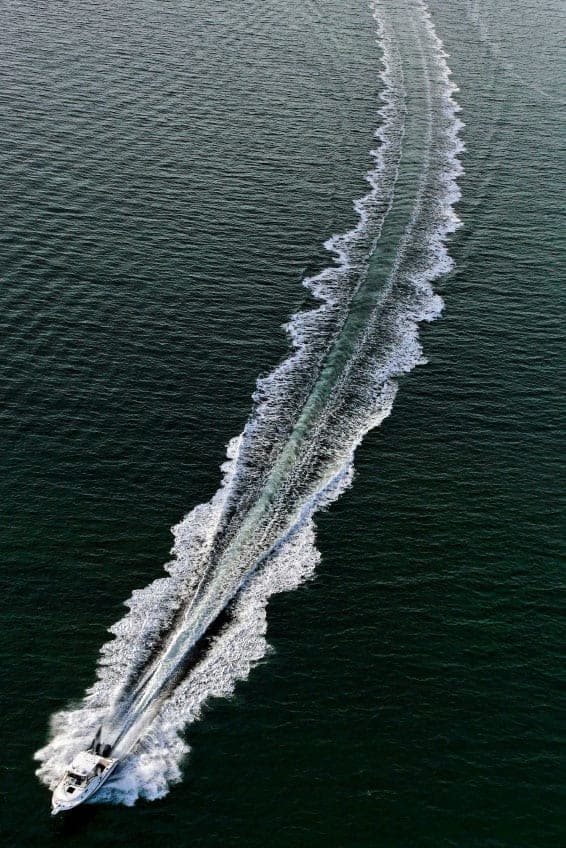
Ships of the future may be able to move through the water without a creating a wake. That is according to a pair of physicists in the US, who have proposed a new type of material that lets water flow around an object as if it were not there at all. The design, which has yet to be built, could boost the energy efficiency of ships and submarines – and even prevent them from being detected. “The main function of [our] structure is to prevent fluid flowing around an object from ‘feeling’ that object,” says Yaroslav Urzhumov of Duke University.
The past five years have seen a flurry of research into invisibility cloaks. The first functioning cloak, which operated for electromagnetic waves in the microwave range, was demonstrated by a team led by David Smith at Duke University in 2006, and since then researchers have proposed and demonstrated cloaks that work for visible light, sound and even events in time.
Warping fluid flow
The latest design, put forward by Urzhumov and Smith in a paper due to be published in Physical Review Letters, could be called a water cloak, or more accurately a “fluid-flow cloak”. It is based on the same theory that gave us previous cloaks, namely transformation optics. In the same way that the equations of general relativity show how gravity can warp space–time, so the equations of transformation optics can show how materials with unusual properties can warp the path of light – or indeed other waves, such as sound or water. These exotic materials, known as metamaterials, can guide waves around an object, so that from a distance it appears as though the object is not really there.
Researchers have adapted invisibility cloaks to water before. In 2008 physicists at Liverpool University in the UK and the Ecole Centrale Marseille in France showed how a metamaterial could shield an object from surface water waves. But surface waves are different from fluid flow: in waves, the fluid itself does not go anywhere and so no mass is transferred. Urzhumov and Smith are the first to show how an object could be cloaked so it can move through water without leaving a trace.
One problem that the pair faced is how to make water flow around a vessel and meet up neatly at the stern. For this, Urzhumov and Smith suggest that the metamaterial surrounding the vessel would need to be not just porous, but also to have an anisotropic structure that exhibits a different resistance to the flow at different points around the hull. This could be a lattice of blades supported by wires, suggests Urzhumov.
Tiny pumps needed
Even if the metamaterial was able steer water around the vessel, there is a bigger problem: the more the water is steered, the more it will slow down. It is this change in velocity that is responsible for the frothy disturbance at a boat’s wake. Therefore, suggest the researchers, the metamaterial would need to actively pump water to counteract the loss of speed. Since this pumping would have to be done throughout the metamaterial, the pumps would have to be tiny.
Urzhumov has a couple of ideas in mind. One is a piezoelectric pump, which consists of a small crystal that bends when a voltage is applied across it. Another is an electro-osmotic pump, in which a voltage across a membrane creates a pressure difference, forcing water through. “Electro-osmotic micro-pumps have a much lower flow rate, so they may [only] be used to build a proof-of-principle, scaled-down, slow-moving prototype,” Urzhumov says. “Piezoelectric micro-pumps are the most likely candidates.”
If Urzhumov and Smith’s fluid-flow cloak were built, the researchers predict that one advantage would be efficiency. As a vessel moves, it drags nearby water with it, displacing more mass than it strictly has to. On the other hand, if the vessel were propelled only by the active metamaterial, then it would displace only the minimum water necessary.
Evading detection
Another advantage is silence: the turbulent wake of a vessel is where a lot of its acoustic noise is generated. By killing the wake, the metamaterial should make a vessel quieter. “Acoustic noise is definitely used by defence [agencies] for detection purposes,” says Urzhumov.
Sebastien Guenneau, a physicist at Liverpool University who helped develop the water-wave cloak in 2008, says the fluid-flow cloak could have “tremendous potential applications in aeronautics”, reducing the disturbed flow around boats, submarines and even aircraft. “There are obvious applications in civil engineering, but I guess the military would be interested too,” he adds.
Smith’s lab has built several electromagnetic cloaks in the past, but the Duke group is not planning to create the fluid-flow cloak anytime soon. “Our experimental strength is in electromagnetic metamaterials…we do not have a hydrodynamics testing facility,” says Urzhumov. “It would be much more efficient to build a collaboration with an organization that is already set up for such experiments.”
A preprint of the article is available at arXiv:1106.2282.



